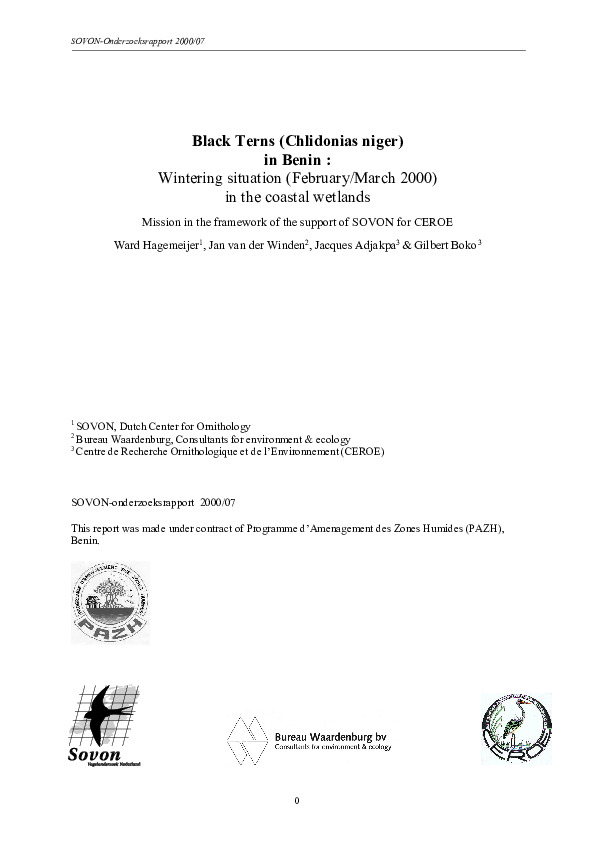RapportBlack Terns Chlidonias niger in Benin: Wintering situation (Ferbruary/March 2000) in the coastal wetlands; Mission in the framework of the support of SOVON for COEROE

Because of its migratory behaviour the Black Tern constitutes a clear and direct link between The Netherlands (where it breeds) and Benin (where it winters and passes on migration). Its threatened status as a breeding bird in The Netherlands makes that there is a high interest in finding the constraints in its life cycle. The responsibility for the conservation of the species is clearly international.
Flagship species
The ecology of the Black Tern – and terns in general – has been studied to some extend and although many aspects remain unknown, provides a good background for understanding new observations. The species is conspicuous in the field and is a ‘flagship species’ for many wetland managers, for example in The Netherlands.
Value
Because it is a piscivorous species there is a direct link to the economical value of wetlands, e.g. to fisheries. The species, being reasonably easy to count, can indicate stock quantities of fish of certain sizes. Furthermore, in a Beninese setting, the Black Tern can serve an educational model for learning about how to perform ecological research on birds.
Wetland of Lac Nokoué
In February and March of the year 2000, Black Terns Chlidonias niger were studied in South Benin. The goal was to introduce CEROE into base-line ecological research and to investigate the possibilities to study the Black Tern as an indicator of the state of the environment, specifically in the wetland of Lac Nokoué. This site is known to be an important wintering site for Black Terns (supports at least 2.5 times the Ramsar 1% criterion). In March 2000 at least 2000 birds were present at Lac Nokoué and Lac Ahémé. Roosting behaviour of the terns at this lake was unknown until now.
Study
The night roost was located and several individuals were caught and measured, giving a first indication of biometry, weight, moult stages etc. of Black Terns in South Benin in this period of the year. Foraging behaviour was observed and quantified, age ratio and plumage scores were taken. First values were obtained for parameters that allow a (rough) comparison between the amount of prey taken by Black Terns and by human fishery activities.
More research needed
The methods applied are promising in the Beninese context but more research effort is needed to get more reliable estimates for the parameters given above.
- Uitgever
- SOVON Vogelonderzoek Nederland (Beek-Ubbergen)
- Rapportnr
- 2000/07